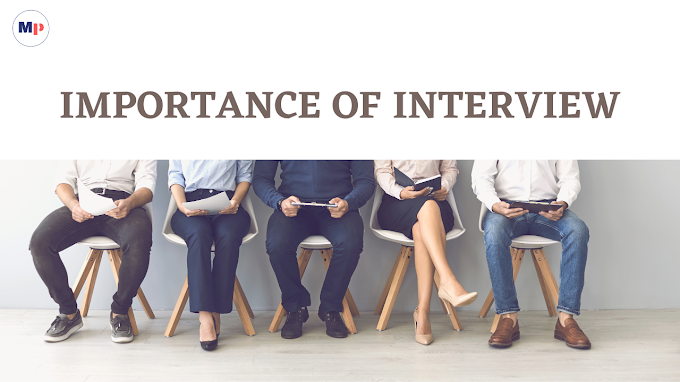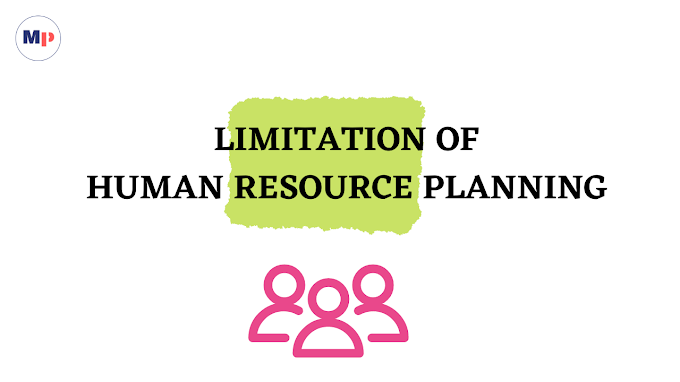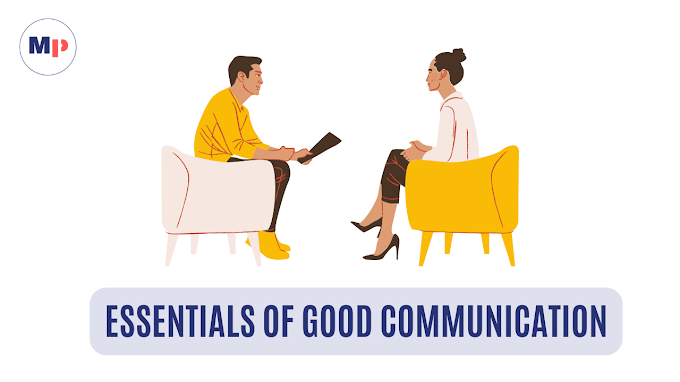Narendra Modi was born in Vadnagar, a small town in Mehsana district of Gujarat state. When he was born, it was in Bombay but now it is currently located in Gujarat. The financial condition of Narendra Modi's family was not good, his father was a street trader who had struggled a lot to nurture his family. Modi's mother is a homemaker woman. Modi along with his brothers sold tea at the railway station and then at the bus terminal to support his family. Modi had faced many difficulties and obstacles in his childhood days, but with the strength of his character and courage, he turned all challenges into opportunities. In this way, his early life was very struggling.
Narendra Modi Family
 |
| Narendra Modi Family Photo |
Modi’s
family belongs to the Modh-Ghanchi-Teli community, which belongs to the Other
Backward Class category by the Government of India. Narendra Modi is the third
child of his parents. Modi's elder brother Soma Modi is currently 75 years old,
he has been an officer of the Health Department. His second elder brother Amrit
Modi is a machine operator, whose age is 72 years. After this Modi has 2
younger brothers, one Prahlada Modi, who is 62 years old, runs a shop in
Ahmedabad, and the other Pankaj Modi, who is working as a clerk in the
information department in Gandhinagar.
Marriage of Narendra Modi - According to the traditions of Ghanchi community, Modi was
married to Jashoda Ben Chimanlal in 1968 at the age of 18. According to the
reports, it has been said that Modi was not divorced from his wife, but still, both of them separated from each other. Modi's wife Jashoda Ben used to work as
a teacher in a government school in Gujarat, which is now retired.
Education and Starting Career
Narendra
Modi's early education was completed from the local school in Vadnagar, he
completed his higher secondary education there till 1967. He left his home
after his family's financial condition was not good, and then he travelled all
over India and discovered diverse cultures. For this Modi visited places like
Rishikesh and Himalayas located in North India. He returned to India after 2
years of touring parts of the North East. In this way, after completing his
schooling, Modi did not do any further studies for a few years.
Then in
1978, Modi got admission in Delhi University of India for his higher education
and then Gujarat University in Ahmedabad. There he did his bachelor's and
master's in political science respectively. Once a teacher of Modi had said
that Modi was normal in studies, but he used to spend most of his time in the library. His debate art was excellent.
Starting Political Career
After his
college studies, Modi joined the Akhil Bharatiya Vidyarthi Parishad and went to
Ahmedabad to join the Rashtriya Swayamsevak Sangh (RSS), a Hindu nationalist
political party, as a fulltime campaigner. During the national emergency
imposed by Prime Minister Indira Gandhi in 1975 - 77, the Rashtriya
Swayamsevak Sangh was banned. Due to which Modi was forced to go underground
at that time and used to travel in disguise to avoid arrest.
Modi was
very active against the Emergency. At that time, he used various tactics to
oppose the government, including the distribution of pamphlets. This revealed his
managerial, organizational and leadership skills. After this, he joined politics
as a political activist. He was assigned the task of writing in the RSS.
In 1985,
Modi thought about joining the Bharatiya Janata Party i.e. BJP party by RSS. In
1987, Narendra Modi fully joined the BJP, and for the first time he helped
organize the BJP's campaign in the Ahmedabad municipal elections, in which the
BJP won.
After
Narendra Modi joined the Bharatiya Janata Party (BJP) in 1987, he rose rapidly
through the ranks, because he was a very wise man. He encouraged the
privatization of businesses, small government and Hindu values. This year, he
was elected as the General Secretary of the Gujarat branch of the party.
Modi's
abilities within the party were recognized after helping LK Advani conduct his
Ayodhya Rath Yatra in 1990, which became his first national-level political
work.
After that,
in 1991–92, Murali Manohar Joshi's Ekta Yatra took place. Modi played a major
role in strengthening the BJP's presence in Gujarat after the 1990 Gujarat
assembly elections.
The party
won 121 seats in the 1995 elections, making the BJP government in Gujarat for
the first time. The party remained in power briefly, which ended in September
1996.
In 1995,
Modi was elected the national secretary of the BJP to handle activities in
Haryana and Himachal Pradesh, and he shifted to New Delhi.
![]()
In 1998, when the internal leadership dispute was going on in the BJP, Modi paved the way for the BJP's election victory
during that time, which successfully helped in resolving the disputes.
![]()
After this year, he was appointed general secretary. He was employed in this post till 2001. During that time, Modi was credited with successfully carrying out the responsibility of bringing the party organization back to different states.
As Chief Minister of Gujarat ( 7 October 2001)
Narendra
Modi first contested the Vidhan Sabha elections in 2001 and won one of the 2
seats in Rajkot. After which he became the Chief Minister of Gujarat. Actually, at that time, Keshubhai Patel's health had deteriorated and on the other hand
BJP lost some assembly seats in the by-election. After which the national
leadership of BJP was handed over to Modi by the hand of Keshubhai Patel and he
was given the charge as the Chief Minister of Gujarat.
On 7 October
2001, Modi was sworn in as the Chief Minister of Gujarat. After this, his
successive victories went on.
He first won
the by-election for 'Second Constituency' in Rajkot on 24 February 2002. He
defeated Ashwin Mehta of Congress by 14,728 votes.
Gujarat riots (2002 Gujarat riots)
Three days
after Narendra Modi won the by-election, a huge incident of communal violence
took place in Gujarat, which resulted in the killing of 58 people. Because at
that time a train full of hundreds of passengers, mostly Hindu passengers, was
set on fire near Godhra. This incident took place against Muslims. Due to which
it spread all over Gujarat. And communal riots started in Gujarat. Around 900
to 2,000 people lost their lives in this riot.
During that
time there was a government of Modi in the state, due to which he was accused
of spreading this riot. Due to the allegations made on Modi, pressure had
increased from all fours, due to which he had to resign from his Chief
Minister's post. Therefore Modi's tenure as the Chief Minister of Gujarat at
that time was only a few months. Then in
2009, the Supreme Court formed a team related to it, which was formed to
investigate the matter. The name of this team was to SIT. After a thorough
investigation, this team presented a report in the Supreme Court in 2010, in
which Modi was given a green signal in this case. However, in 2013, the
investigation team was accused that they have hidden the evidence against Modi.
Second term as Chief Minister
When Modi
got a clean chit from the court, he was again appointed as the Chief Minister
of Gujarat. After Modi again became the Chief Minister of Gujarat, he started
working for the development of the state. This also brought about a lot of
changes in the state. He built technology and financial parks in the state of
Gujarat. In 2007, at the Vibrant Gujarat summit, Modi signed real estate investment
deals worth Rs 6,600 billion in Gujarat. After this, in July 2007, Narendra
Modi had completed 2,063 consecutive days as the Chief Minister, due to which
he took the record of holding the post of Chief Minister of Gujarat for the
longest time.
Third Term As Chief Minister
This record
of Modi continued even further, in the Gujarat assembly elections held in 2007,
Modi won again and he became the Chief Minister for the third time there. During
this tenure, Modi paid more attention to economic development in the state, and
also focused on privatization. He encouraged his policies as a Global
Manufacturing presenter to shape India. During this period of Modi becoming the
Chief Minister, there was a great increase in the agricultural growth rate in Gujarat.
Its growth was so much that it had become a much more developing state than
other states of India. He arranged for the supply of electricity in rural
areas, which helped to increase agriculture. Between 2011 and 2012, Modi
started the Goodwill / Goodwill Mission in Gujarat. Modi also undertook many fasts and believed that
this step would further strengthen the atmosphere of peace, unity and goodwill
of Gujarat.
Final Term As Chief Minister
In 2012,
Modi’s term of Chief Minister ended for the third time. And again this year
assembly elections were held in Gujarat. And like every year, Modi won this
year too and appointed him to take over as the Chief Minister of Gujarat for
the fourth time.
Therefore
Modi was given credit for bringing prosperity and development in the state. Due
to this, during that time as the head of the Gujarat government, he had made
his mark as a capable ruler. He is also credited for the rapid development of
the state's economy. Apart from this, Modi was placed at the forefront of his
and his party's electoral performance, because he was not only the most
talented leader of the party, but he had talent as a candidate for Prime
Minister. However, some people believed that the state is not very good in the
development, education, nutrition and poverty alleviation of the people. But
still, people liked him because of his actions and his policies.
Role in General Election-2014
In June, a
year after Narendra Modi became the Chief Minister of Gujarat for the fourth
time, he was made the President of the Bharatiya Janata Party. And in this way, he appeared as the prime ministerial candidate in the 2014 general elections.
Due to which Modi had to relinquish the post of Chief Minister of Gujarat.
However, during that time some members of BJP along with Lal Krishna Advani
opposed this thing. But still, Modi won both Varanasi and Vadodara seats
during that time. And had made his place as the prime ministerial candidate in
the upcoming general election.
During this
election, Modi held about 437 election rallies across the country, during these
rallies, he put many issues in front of the public, due to which people were
impressed and voted for BJP. Then the BJP's victory in the 2014 general
election became a historic victory. This year BJP won 282 seats out of 534 on
the basis of an absolute majority. And thus Narendra Modi became a new face as the
Prime Minister of India.
Narendra Modi as a Prime Minister of India
After
winning the Prime Minister's post, on 26 May 2014, Narendra Modi took oath as
Prime Minister and thus he was appointed the 14th Prime Minister of the
country. After Narendra Modi became the Prime Minister, people started
expecting a lot from him. As Prime Minister, Modi did many development works in
India. He encouraged foreign businesses to invest in India. Modi ji implemented
various rules, permits and inspections so that business can grow more and
easily. He spent less on social welfare programs and focused more on healthcare.
Apart from this, he also did many things to encourage Hindutva, defence,
environment and education.
Narendra Modi Famous Schemes
In the
tenure from 2014 till now, Modi ji started many important schemes and
initiatives. Some of which are information about -
Swachh Bharat Abhiyan: This campaign is a massive campaign
launched by India, under which sanitation in the country and millions of
toilets were constructed in rural areas.
Pradhan Mantri Jan Dhan Yojana: This scheme was started to open
accounts in the banks of farmers of the country. Under which the farmers'
accounts were opened for free and the assistance given to the farmers was
deposited in their bank account.
Pradhan Mantri Ujjwala Yojana: Under this scheme, women of poor
families were given LPG gas cylinders while giving them respect.
Prime Minister of Agricultural
Irrigation Scheme: Under
this scheme, crops can be irrigated well and agricultural work can get better
direction. Therefore, this scheme was started.
Prime Minister Crop Insurance Scheme: In this scheme, farmers were provided
insurance for the crop. So that if their crops go bad due to natural disasters,
then they can get insurance money.
Pradhan Mantri Kaushal Vikas Yojana: Under the Pradhan Mantri Kaushal
Vikas Yojna, the youth were given the facility to train them for skill
development.
Make in India: After coming to power, Prime
Minister Modi launched some very important campaigns, one of them was the 'Make
in India' campaign. Under which work was done for the development of the
manufacturing sector by encouraging them.
Poor Welfare Scheme: Under this scheme, work was done for
the welfare of the poor and to provide them with better facilities.
Sukanya Samriddhi Yojana: The Prime Minister's objective of
starting this scheme was to provide financial assistance to young girls for the
empowerment of them.
Pradhan Mantri Awas Yojana: Under this scheme, financial
assistance was provided to the poor to build their own house on the basis of
instalments.
Digital India Program: The Prime Minister started this
program and inspired to digitize the economy in the country. Along with this,
he also appealed people to use digital technology.
Main Work of Narendra Modi
As both
Chief Minister and Prime Minister of Gujarat, Modi took many important
decisions and information about some decisions taken during his tenure is as
follows:
Bhumijal Conservation Project: During his rule as the Chief
Minister of Gujarat, the government supported the construction of the Bhumijal
Conservation Project. This helped in the cultivation of Bt cotton, which could
be irrigated with tap wells. In this way, Gujarat became the largest producer of
Bt cotton.
Demonetization: During the tenure of the Prime
Minister, Modi ji took a very important decision like demonetization. Under
which Modi stopped the old notes of 500 and 1000 and issued new notes of 2000
and 500 in its place. This was a historic decision taken by Modi.
GST: After demonetization, Narendra Modi
included all the taxes that were levied in the country together and implemented
a tax GST i.e. Goods and Services Tax.
Surgical strike: After the Uri attack in 2016, Prime
Minister Narendra Modi decided to conduct a Surgical Strike with the Indian
Army to teach Pakistan a lesson.
Air Strike: After this, after the Pulwama attack
in February in 2019, he gave free rein to all security forces of the country to
take any action against Pakistan, which was a big announcement. After this,
there was an Air Strike by the Air Force in February itself.
Narendra Modi’s Awards and Achievements
Narendra
Modi has achieved the following achievements in his life so far :
In 2007, in
a survey conducted by India Today magazine, Modi was named as the best Chief
Minister of the country.
In 2009, he
was honoured as the Asian winner of the FDI Personality of the Year award in FD
Magazine.
After this,
Modi's photo was printed on the cover page of Times Asian Edition released
in March 2012.
In 2014,
Modi was named 15th in the list of the most powerful people in the world in
Forbes magazine. In the same year, Modi's name was also listed by the Times of
India among the 100 most powerful people in the world.
In 2015,
Modi was named the 13th most influential person in the world in Bloomberg
Market magazine. And also he was named as the second most followed politician
among the 30 most influential people on Twitter and Facebook in the Internet the list released by Time magazine this year.
In 2014 and
2016, Modi's name was announced as the winner of Time magazine's Pathak
Survey.
u
In 2016 itself, on the 3rd of April,
Modi was given the highest civilian award of Saudi Arabia on the orders of
Abdulaziz-al-Saud. And on 4 June, Afghanistan's highest civilian award was
given on the state order of Ghazi Aamir Amanullah Khan.
In the years
2014, 2015 and 2017 too, Modi's name was included in Time magazine among the
100 most influential people in the world. And in 2015, 2016 and 2018, Forbes
magazine was among the 9 most powerful people in the world.
On February
10, 2018, he was honoured with Palestine's highest civilian award 'the Grand
Kolar of the Palestine State' for foreign dignitaries.
On September
27, 2018, Narendra Modi was awarded the Champions of Earth Award, the highest
environmental honour for the United Nations and the award was also presented to
5 other individuals and organizations who have led the leadership of the
International Solar Alliance And by 2022, it was resolved to end the use of
plastic.
In the year
2018 itself, on October 24, he has been awarded the Seoul Peace Prize for Modi's contribution to promoting international cooperation and global economic
development.
On 22 February 2019, Modi received the prestigious Seoul Peace Prize 2018.
And at the same time, Modi's name has also been nominated for this year's 'Nobel
Peace Prize' for starting the world's largest healthcare scheme
On April 2019, PM Modi received the Order of St Andrew the Apostle award for exceptional services in promoting special and privileged strategic partnership between the Russian Federation and the Republic of India.
On June 2019, Narendra Modi received Order of the Distinguished Rule of Nishan Izzuddeen award. This award is the Maldives' highest honour accorded to foreign dignitaries.
PM Narendra Modi awarded by the Bill and Melinda Gates Foundation Award for the 'Swachh Bharat Campaign' in the month of September 2019.






